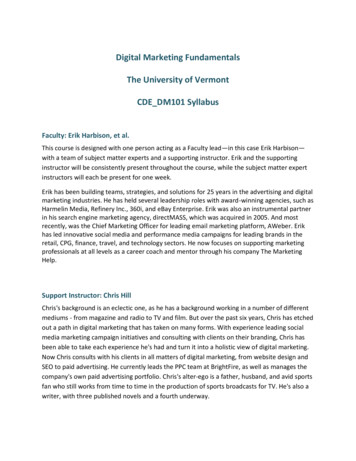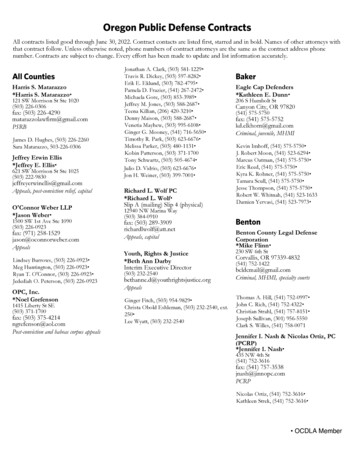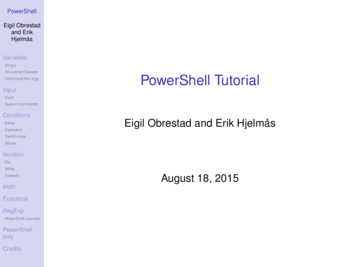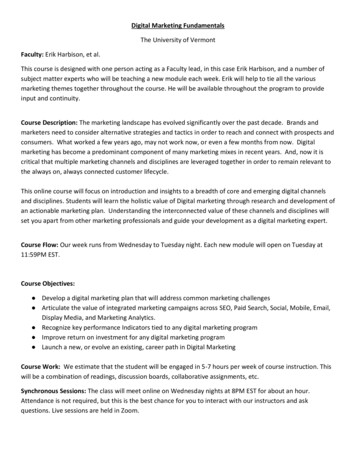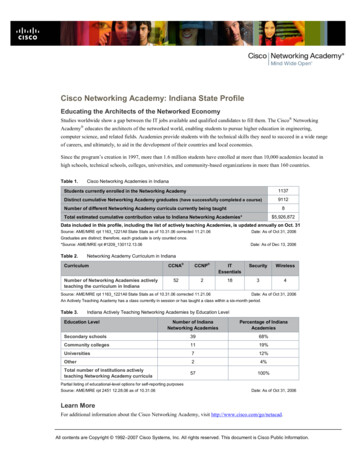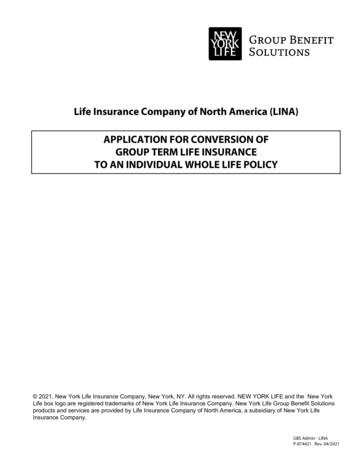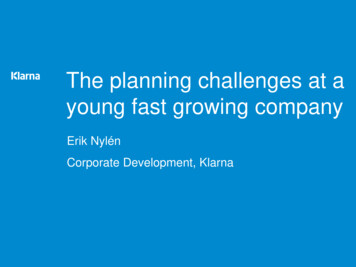
Transcription
The planning challenges at ayoung fast growing companyErik NylénCorporate Development, Klarna
This is the Klarna Group Founded in 2005, with a focus on simplifying buyingonline World market-leader in after-delivery payments 4.6 billion transaction volume in 2013(FC 7.1 billion in 2014) 45,000 online merchants across Europe 25 million consumers 15 countries More than 1,100 employees Main shareholders: Employees and Founders,Sequoia Capital, General Atlantic, DST Global,and Atomico
Over 45,000 merchants love Klarna’s products
Business modelMerchantsThings to be forecasted: # of future, existingmerchants Consumer/Merchantbehavior Country Segment Etc. Payment methoddistribution Revenues & costs forpayment methodsConsumersPurchasesPaymentmethodRevenues& directcosts
Previous forecasting model and requirementsOld solutionRequirements An Excelmodel with 275 sheets1. Based on a cohortsAccurate1. Seasonality & trend2. Systematic approach for future andrecently live merchants Manual updating of data A lot of manual labour Prone to manual errors2. No adequate logic to handle bothseasonality and trend Specifically relevant for merchants withfew data points Aggressive revenue estimations longterm To high cost base as a result3.Quicker to update4.Easy to maintain/develop further5.Understandable6.Ability to slice and dice and do specificoverrides Something more scalable:New countriesNew payment methodsNew productsUpselling and cannibalization
Project groupWe ended up having: One internal project leader 1-3 inhouse people 1-2 SAS consultants Easier to steer than a lot of external SAS consultants running around You really need to understand the business to build a good solution A lot cheaper
ResultRequirementsResult1.1.More accurate, MAPE decreased by 70%2.Much more scalable than prior Excel solutionEasy to add new countriesEasy to add new payment methodsSlightly more difficult to add new productsUpselling between potential future products stillrequires developmentAccurate1. Seasonality & trend2. Systematic approach for recently signedmerchants2. Something more scalable:New countriesNew payment methodsNew productsUpselling and cannibalization3.Quicker to update4.Easy to maintain/develop further5.Understandable6.Ability to slice and dice and do specificoverrides 3.Quicker to update and forecast 20 minutes to update data Full automation not worth time invested due tofrequent changes in system4.A system possible to develop and maintaininternally1. Modular2. Know-how exists since internal project3. SAS Enterprise Guide quite easy to learn5.Full ability to slice and dice forecasting data
Lessons learned Business knowledge and time extremely vital in order to project lead Spur the internal creative process, keep only a small amount of consultants for morecomplicated work (if possible) Module management makes things scalable and easier to change Deliver things in phases A certain level of stability is required if automation should be worth it
This is the Klarna Group Founded in 2005, with a focus on simplifying buying online World market-leader in after-delivery payments 4.6 billion transaction volume in 2013 (FC 7.1 billion in 2014) 45,000 online merchants across Europe 25 million consumers 15 countries More than 1,100 employees Main shareholders: Employees and Founders,
